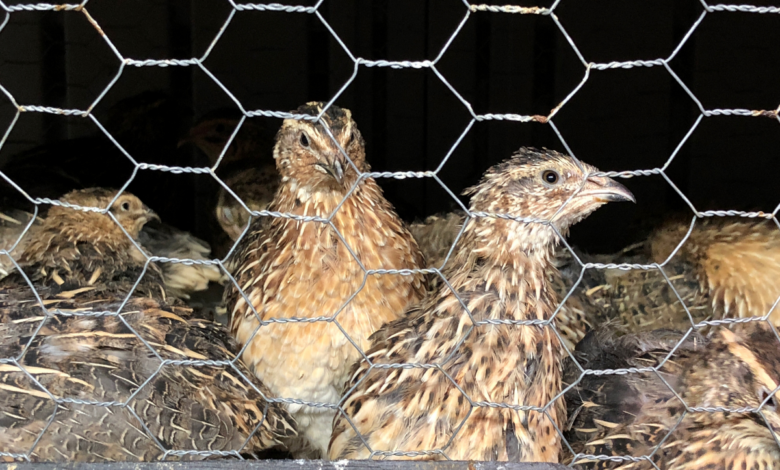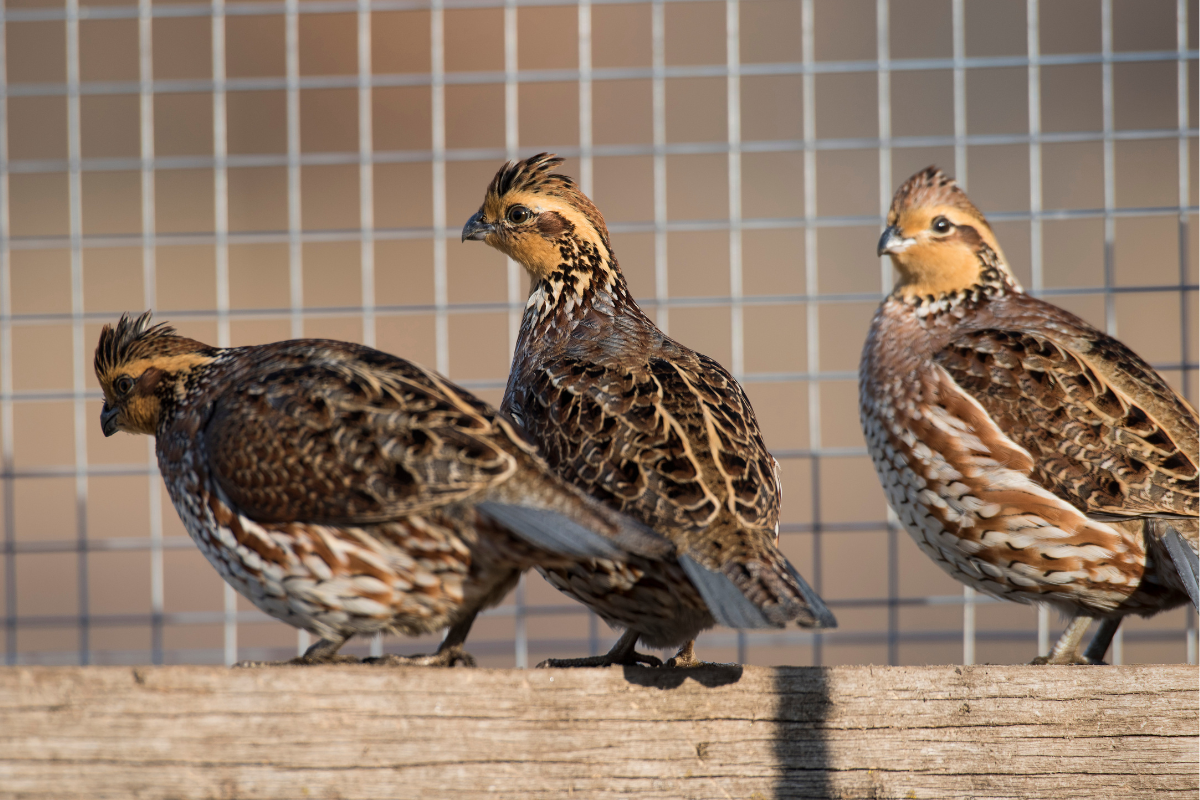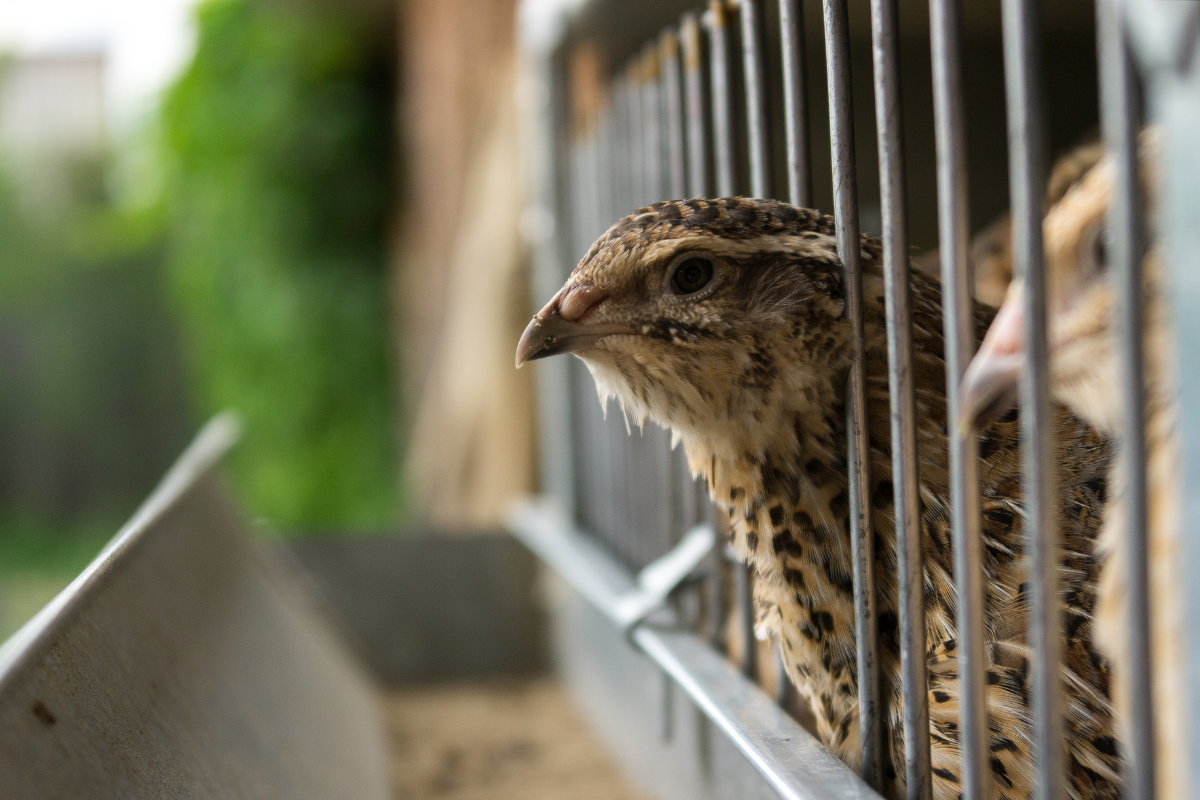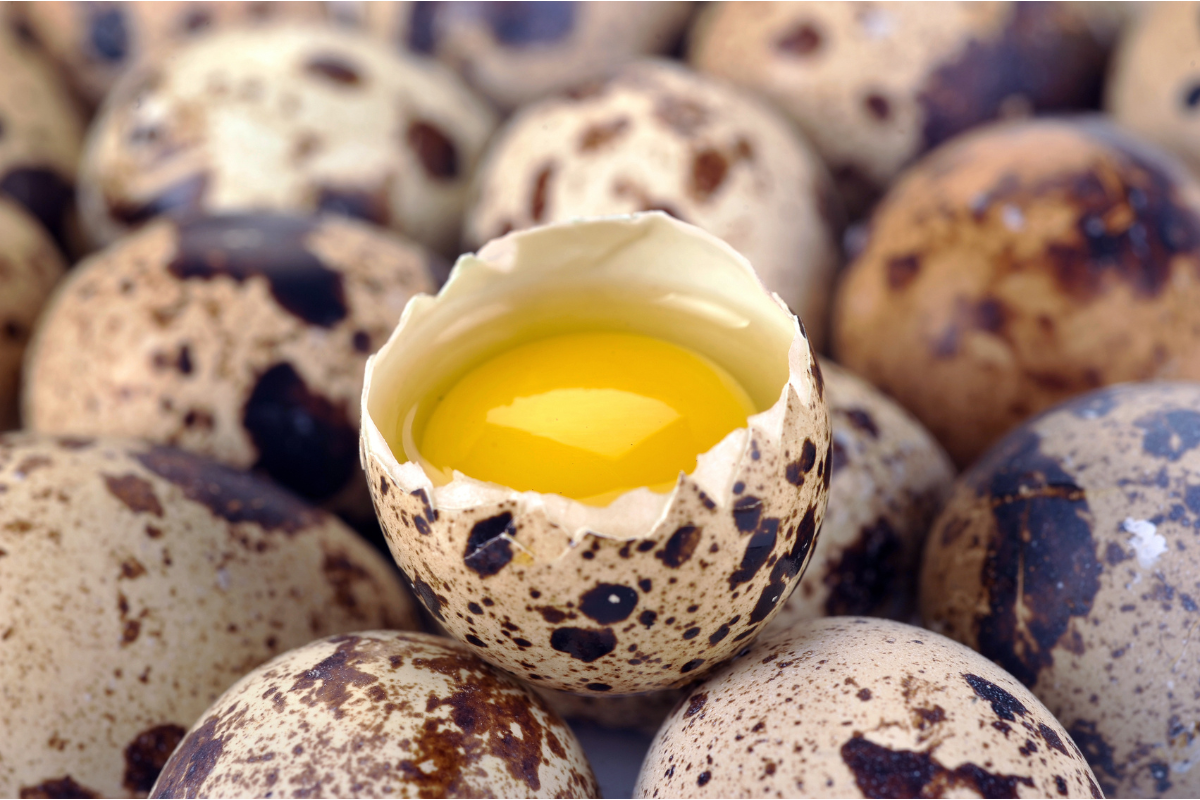The Complete Homesteaders Guide to Raising Quail

So you have set up your homesteading plans but need to decide about selecting the right bird for your backyard flock.
Have you given the often-overlooked quail a thought?
This bird can serve multiple purposes– meat, eggs, profit, and even companionship. Bonus traits– a charming personality and adorable looks. No wonder its popularity is rising across the country.
Here is a compact but comprehensive guide about raising quail to help you learn more.
Prefer a video format? Check out the video below from Modern Homestead to learn more about the animals they raise.
Learning How to Raise Quail
Before adding the quail to your backyard flock, you need to choose the right breed. Before we look into the breed options, here are some factors you must consider.
- The right breed choice will depend on your purpose for raising quail. Consider whether you are raising quails for meat, eggs, or as a game bird.
- Since some breeds require more space than others, consider the available space.
- Consider the weather in your area. Some breeds are less tolerant to extreme temperatures.
- Some breeds may be hard to find in your area
Here are some of the top quail breeds that have emerged as the stars of the show.
The Coturnix Quail
The Coturnix quail is a great option for urban homesteaders as they are excellent meat and egg producers. Since they are hardy and disease-resistant, they are easy to care for. These birds grow quickly and start laying eggs incredibly early – within the age of 6-8 weeks of age.
Bobwhite Quail
The Bobwhite quails are slightly larger than the Coturnix quails and are a great option if you are raising quail for meat. While they are not as efficient as egg layers, their meat is delicious. Plus, they are versatile and show excellent resistance to varying environmental conditions. They are also a good option for hunting.
California Quail
While the meat and egg supply from the California quail does not match the Bobwhite and Coturnix, they add an exotic touch to your surroundings. They do not require much space and are hardy birds. To me, their topknot seems somewhat cartoonish, but if you want something right out of the movie “Bambi” in your homestead, go for them.
Button Quail
The Button quail or the Chinese Painted quail is the smallest quail breed you can pick. Do not go for them if you are aiming for meat and eggs. However, they are adorable birds that make great pets. Note that they do not adjust well to extreme cold conditions. You need to keep them warm and comfortable in winter.
Housing Requirements
When it comes to space requirements, an adult Couturnix quail requires 0.5 to 1 square foot of floor space. For the Bobwhite quail, the floor space required is .75 square feet per adult bird. The smaller breeds and younger quails will require less space.
Since quails are primarily ground-dwelling birds, a cage height between 12 to 18 inches should be good enough. They tend to injure themselves by flying vertically up when frightened. A lower roof will reduce impacts in such scenarios.

It is important to have a good brooding area that allows the young quails to grow into healthy adults. Keep an eye out for cannibalism and pecking in restricted spaces, especially for the Bobwhite quail.
Do not miss the space requirement for the feeding and watering stations that you set up. The feeding station should allow around 1/3rd of the birds to feed together. The spacing between each bird should be around 1 inch.
The type of housing should be determined after selecting the quail breed. Both cages and coops are well suited for small spaces. They work well in backyards and small fields. However, it is important to understand the pros and cons of each before picking.
When housed in cages the quails are easy to care for and you can identify a sick bird easily. Cages are space savers and reduce the chances of an infection spreading among the birds. It is also easy to collect eggs from a cage. Since the activity of the quails is reduced in the cage, the growth rate is faster. Lastly, they provide better ventilation.
On the other hand, a coop is a permanent structure and provides better protection against weather as well as predators. You can even set up an electric connection to introduce a light that can also heat the space in winter.
However, a coop is more expensive to build and will also require some form of maintenance. Keep in mind that quails tend to poop a lot. So, cleaning the interiors of the coop regularly can be a hassle for you. Making a cage predator-proof. can be an issue. If you do not know this, rats coyotes, and bobcats can be notorious quail killers.
If you are the DIY type, an outdoor quail pen can be a good idea. You can build an elevated pen on wheels that can be moved indoors during the winter. The elevated design also helps to clean the fecal matter easily and makes it difficult for predators to climb up.
For those who prefer a ground pen, one option is to use organic bedding made from straw, leaves, and grass clippings. Once the birds soil it, you can add more bedding on top. Ultimately, the decomposed lower layers can be used as compost for your garden.
Essential Features
No matter the type of shelter you choose, keep the birds secure. Quails can fly and I am yet to see a quail with a strong homing instinct. They cannot fly for long distances, but once they take off, you will have a hard time getting them back.
Many homesteaders prefer mesh floors for quail since it makes cleaning the fecal matter a lot easier. Cleaning the cage wires can be challenging, so placing a layer of wood above the wire is a good idea. Ensure that the gaps between the mesh are small enough to prevent the entry of varmints.
In contrast, a solid wooden floor is easy to clean and offers better insulation in colder climates. It also provides a natural surface for the quails, making it easier for them to move around. If you are setting up a coop, a concrete floor can be a long-lasting option.
Natural light is the best option for keeping quails. However, increasing the egg production rate is possible by maintaining steady light levels for around 14-16 hours a day. For this, you can use supplemental artificial light during winter and then decrease it as the day lengthens in summer.
Since the urine or feces of the birds contain ammonia, proper ventilation for quails is a must. Otherwise, the accumulation of gaseous ammonia will affect their health. The other way to control ammonia is to ensure the proper balance of protein levels in the diet of the birds.

Feeding and Dietary Needs
Quails are easy to feed since they are omnivorous. They can consume seeds and proteins like insects and earthworms in spring and early summer. Millets and wheat are some seeds that they love. In fall and winter, they will shift to leaves as seeds become less available. These also consume forbs and grass seeds.
In case you are buying quail feed, the chicks need a “starter” diet that has the highest level of protein. This is essential for ensuring proper growth.
Once they grow up, the feed-meat birds are provided with a “finisher” diet. This diet balances the protein with calcium and phosphorus that help with bone development. For laying birds, choose a “breeder” feed.
You can add vitamins and minerals to all diets as a premix. Minerals like calcium and phosphorus are an important part of breeder feed as it helps in the formation of eggshells. Other minerals to include are iron, zinc, and manganese.
Feeding Equipment
Let me warn you that quails have horrible table manners. This not only leads to wastage but also can also mix the food with the droppings. When the birds consume that discarded food, they risk an infection.
Moreover, the right type of feeder improves the Feed Conversion Ratio (FCR). That might sound complex, but it is not. Basically, it is the amount of feed required per unit of weight gain. A better FCR indicates reduced feed costs and a lower environmental footprint for your homestead.
Here are the common quail feeders that you can use to minimize wastage.
Cage Feeders- These feeders come in the form of a galvanized tray that gives the birds direct access to the feed from the cage. They are extended into the cage through an opening in the wires.
Hopper feeders– These are gravity-based feeders that consist of a self-dispensing cylinder. The food falls on an open ring at the bottom. While these are not fully wastage-proof, they are a cheap option for a small flock.
DIY feeders- DIY feeders can be made from a wide range of objects, from water tubs to PVC pipes. You can make your own design to remove the drawbacks of commercial feeders and there are plenty of ideas available online.
Clean the water troughs every day to remove droppings and other litter. The water trough should not be higher than the back of an adult bird. Many breeders prefer keeping marble slabs at the bottom of the trough to provide the chicks with something to stand on. Adding a few drops of apple cider vinegar to the water will help in keeping parasites under control.
Daily Care and Maintenance
Quails are hardy birds and need minimal care. I keep the feeders filled with food and they eat as much as needed. Overeating is not a concern with these birds. Keep the food size limited to bite-sized pieces and avoid mashed or powdered feed. The cages should be cleaned at least twice a week.
Balance the male-to-female ratio in a cage as a few males can be mean and have a tendency to peck at others. This can result in injuries and even death. A ratio of one male to three females for a cage works well.
Since quails are related to chickens and turkeys, they can be affected by infectious, and parasitic diseases similar to those common in poultry. Symptoms like dropped feathers, lethargy, and watery droppings can be related to a disease called Ulcerative Enteritis.
This is caused by a bacterial infection in the digestive tracts of the birds. If the disease is confirmed, separate the affected birds from the healthy ones.
Quails can also be affected by a flu-like condition called infectious coryza. Snotty beaks and eyes, swollen faces, and being smelly are some symptoms. Consult a veterinarian for antibiotic treatment for the condition.
Another common problem is intestinal worms. In case the birds are suffering from diarrhea and weight loss, consult the veterinarian for a deworming routine.
Behavior and Enrichment
Quail have an organized social structure and prefer to live in groups. This is more so during winter, which is the mating period. However, some of the wild birds tend to remain solitary.
Similar to turkeys, the male quails engage in a courtship display to attract the females during the breeding season. The display involves puffing of chests, fanning the tail feathers, and making special calls. Once a pair is formed, they engage in nesting behavior.
Kept in cages, the birds can get bored easily. You need to design a few boredom busters to keep the quail happy and stress-free. These little buggers have a secretive nature and they tend to find hiding spots when they are threatened. You can provide hiding spots for them by using items like wooden crates, rage pipes, and hollow logs.
I use piles of hay and they work well too. To mix up things, you can create small brush piles made from twigs and sticks inside the cage, once a week.
Also, quails tend to keep their feathers clean and free from pests. They take dust or sand baths for this purpose. Arrange a small dust bath in each pen or cage where they can clean themselves. You can also let them have some fun in a large tub filled with sand.

Harvesting Eggs and Meat
While quail eggs are hardy, make sure to handle them with care. The easiest way to collect the eggs is to keep the floor of the cage sloped. That way the eggs can roll down to the collecting tray.
However, in a coop, the quail may tend to hide the eggs. The eggs can be difficult to spot. I know it the hard way as I have accidentally stepped on a few.
While collecting quail eggs, discard dirty and discolored eggs and the ones with cracked shells. Also, discard the eggs that are too small or too large. These eggs can be fed to pets or chickens. Or else, you can break them and feed them back to the quail as a source of calcium.
I store quail eggs in the fridge and consume them within the month. They seem to dry out if stored longer than 30 days. If you plan to incubate the eggs, store them in a dry place with the temperature set around 68 degrees.
Raising Quail for Meat
The easiest way to butcher quails is by popping their neck. It takes some practice to master the technique, but it is bloodless and good for beginners. The second is the old-school method of cutting off the head.
The second process can get bloody as the birds tend to flop around. You will need a bucket to collect the blood. But if you have butchered chickens and meat rabbits before, this should not be too difficult for you.
De-skinning quail is relatively simple as their skin is thin. Use sharp scissors to clip the wings and the legs. Now, you can tear the skin away to expose the flesh. Once skinned, you can open up the chest to remove the internal organs.
It is best to skin them in the kitchen sink or use a garden hose to rinse the bird as you proceed. Finally, dip the bird in ice-cold water and store the flesh in vacuum-sealed freezer bags. Otherwise, you can follow the traditional methods of preserving meat in the wild.
Sustainability and Benefits
Because of the high nitrogen content, you cannot use quail poop directly as fertilizer. That way, you will end up killing a lot of plants. You can combine the bird droppings with peat, sawdust, and other organic waste. When composted properly, quail manure can be used safely in your garden.
I wait for around 4 months before using the quail manure. That gives sufficient time for the pathogens to die out. The manure is environmentally friendly and can boost plant growth. That said, in my experience, not all fruit and vegetable plants prefer composted bird manure. So try it out and see what works and what does not.
Economic Benefits
Studies suggest that for small-scale producers, quail production has a higher probability than chicken production. The trick is to research the market as the demand for quail eggs is high in specific locations only.
However, the future demand for quail eggs as well as the stability of egg prices are uncertain. So, if you are choosing from the best states to homestead, this is a point you need to keep in mind.
The quail meat market is showing signs of growth as the demand for clean and organic meat is rising. Due to the high protein and low fat content of the meat, it is becoming a popular choice for health-conscious consumers.
Frequently Asked Questions
How long do quail live in captivity
Quail can live for 5 to 6 years in captivity. However, birds from specific species can have a shorter lifespan.
Can you free range quail
Because of their small size and flighty nature, free-ranging quail is not the best option. If you plan to free-range them, it will take additional effort and supervision.
Are quail easy to raise
Raising quail is relatively simple and can be a reading experience as well.
Final Thoughts
There you have it. A complete guide to quail farming.
These birds are easy to keep and the quail-ity of the meat and eggs they provide is high. Plus, if you are a gun dog owner, the quail is a great choice for training a puppy.
My suggestion is to start with a batch of 20 or 30 birds. Chances are, that you will lose a few birds in the beginning. But as you progress along the learning curve, things will improve.
If you are hesitating to take the plunge, let me assure you, – raising quail is worth it.



